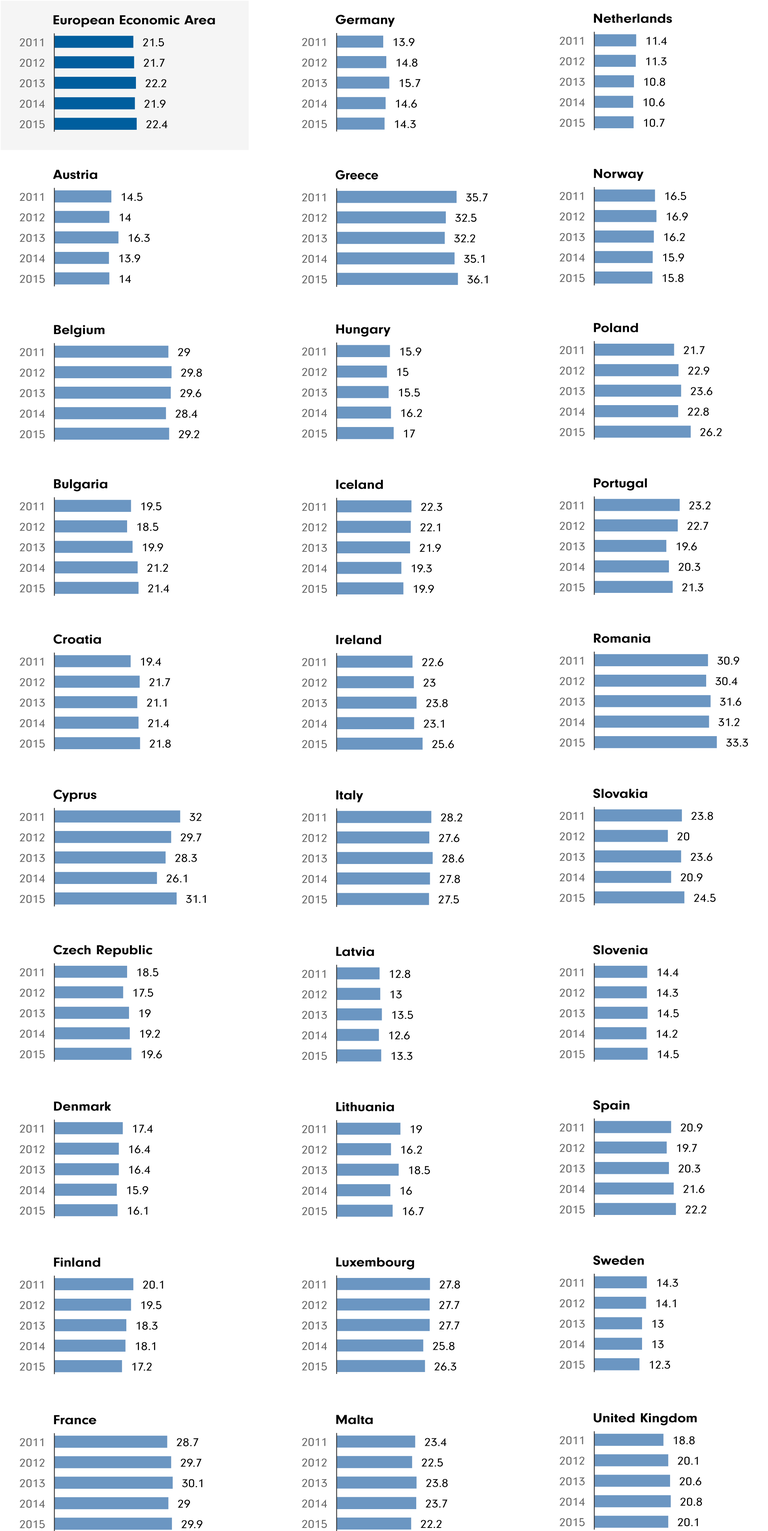Antibiotic consumption in Europe
In the last year the average person in Greece took three times as many antibiotics as the average Dutchman, according to the latest report from the European Centre for Disease Prevention and Control (ECDC). The EU’s top infection control authority found that in one day, 36 out of 1,000 Greeks were given antibiotics, compared to only 10.7 per 1,000 in the Netherlands.
The ECDC report also found a clear north-south gradient when looking at trends in antibiotic consumption in humans. In Romania, Cyprus, France, Belgium, and Italy, doctors prescribe far higher amounts of antibiotics compared to Estonia, Sweden, Latvia and Austria. Germany ranks sixth in the EU for human consumption of antimicrobials, with a comparatively good value of 14.4 daily doses of antibiotics per 1,000 people.
This data showing how often people take antibiotics in different countries is important: the more antibiotics are prescribed, the more frequently germs which are resistant to treatment with them develop. This correlation between more frequent prescribing and increasing resistance is seen in the ECDC data.
The underlying question is why antibiotics are prescribed so much more frequently in southern EU countries. Walter Popp, a hospital hygienist who researches health care in the EU, says that poorer health care in the southern countries is responsible for the higher consumption of antibiotics. He says that poor hygiene means infections occur more often, and so more antibiotics are prescribed to combat them.
The EU Commission commissioned an EU-wide opinion survey, called the Eurobarometer, to look deeper into this issue. The survey found that the more people knew about antibiotics, the less likely they were to take them unless they absolutely had to.
Respondents to the survey were asked whether they believed that antibiotics would help if they had a cold. In Greece, Bulgaria and Poland, only 30 per cent of people knew that antibiotics could not help cure a cold. In contrast, about 80 per cent of people in Finland, the Netherlands and Sweden were aware that they shouldn’t take antibiotics for their cold. Citizens in Germany were close to the average when it came to knowledge of antibiotics, with 57 per cent aware that antibiotics wouldn’t help with a cold. However, this average figure means that every second respondent in the EU would consider an antibiotic useful for a cough or a runny nose. This figure also implies that doctors in some countries were willing to prescribe antibiotics for a cold – otherwise, why would the respondents think antibiotics were appropriate.
Antibiotic consumption in humans
Daily doses per 1000 inhabitants per day

Source: ECDC
In the Eurobarometer survey, it was clear that countries which had a low antibiotic consumption also had populations with higher than average knowledge of antibiotics. The countries which came out top in the survey were Finland, Holland and Sweden – all countries with a lower than average antibiotic consumption. On the other hand the populations of Greece and Italy, both of whom have high levels of antibiotic consumption, were the least informed about the usefulness and harm of antibiotics. In some EU countries antibiotics can be purchased without a prescription, and although this is not legal in Greece the pharmacies still give out antibiotics over the counter – about 20 per cent of antibiotics in Greece are taken without the patient having previously been to see their doctor. In Romania this figure was 16 per cent. At the other end of the scale, only two per cent of antibiotics in Sweden are taken without a prescription.
Text: Hristio Boytchev
Illustration: Nick Böse
Data visualisation: Simon Wörpel, Andrew Silver
